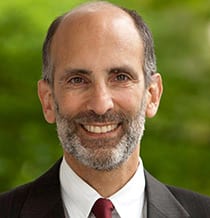
By Gwyneth K. Shaw and Judith Katz
A satellite launched in August by NASA’s Jet Propulsion Laboratory has close ties to Berkeley Law’s Center for Law, Energy & the Environment (CLEE) from the project’s origin to groundbreaking methane emissions research for years to come.
The Tanager-1 satellite is part of the broader Carbon Mapper initiative, which aims to detect and quantify methane emissions with unprecedented accuracy. In tandem with MethaneSAT, launched by the Environmental Defense Fund, it can detect both large area methane emissions and leaks within a few meters of their source.

Tanager-1 specializes in identifying point sources, such as oil fields or landfills, while MethaneSAT covers broader areas. Together, these satellites will provide real-time data on moderate to large leaks, helping to address a significant gap in methane monitoring and reporting.
Methane — a powerful greenhouse gas responsible for about a third of global warming — has been difficult to track. CLEE Project Climate Director Ken Alex, who was a senior policy adviser for then-Gov. Jerry Brown when the idea for the project developed, calls the satellite network a game-changer.
“The satellites — there will be a few of them over the next few years — can cover much of the earth and identify methane emissions almost anywhere in the world,” Alex says. “Because methane is colorless and odorless, facilities often don’t know that they have a leak, which the satellite can detect.”
Brown joined the effort to develop a methane-tracking satellite in the early 2010s as part of his search for ways to reduce emissions in the state, saying, “We’re going to launch our own damn satellite to figure out where the pollution is and how we’re going to end it.”
In Sacramento and after joining Berkeley Law, Alex was instrumental in the early stages of this groundbreaking project. He pitched the satellite idea to Brown, catalyzed collaboration between key stakeholders — including California state leadership, NASA, and other partners — and helped secure philanthropic funding to bring Planet Labs, a San Francisco-based satellite company, on board.
Orbiting eyes
Tanager-1 and its teammates will make a major impact on the Subnational Methane Action Coalition, which CLEE founded alongside the state and has jurisdictions around the world to help accelerate action to reduce methane emissions.
“We will be integrating satellite data into that effort, which will help with methane inventories, leak detection, and measuring progress,” Alex says.
CLEE is also working with the UC Berkeley School of Engineering to better understand methane emissions from landfills and will incorporate satellite data in that effort.
While many methane sources, such as landfills and oil extraction sites, are well known, around 20% of emissions come from unidentified or underreported sources. These new satellites will help close that gap by providing precise, almost real-time data that can help target leaks and mitigate them.

While the launch of Tanager-1 is a significant technological achievement, the work is just beginning. Data gathered from it will help shape California’s climate policies and support global efforts to combat methane emissions, providing critical information in the fight against climate change.
Importantly, Carbon Mapper and the Environmental Defense Fund will make the methane data publicly available, allowing nongovernmental organizations, governments, and the general public to access the information — ideally enhancing accountability and encouraging action from companies and jurisdictions to reduce their emissions.
CLEE will play a major role in using the data, working with partners to verify the accuracy of satellite readings and match them with ground-level detection records to guide more effective methane mitigation strategies. This research will also be valuable for state and local governments, industries, and environmental groups, who can use it to make stronger emission reduction policies.
The Tanager project is just one of CLEE’s ongoing contributions to shaping climate policy by leveraging cutting-edge science to reduce one of the most potent greenhouse gasses driving global warming, Alex says.
“CLEE works on accelerating climate solutions well beyond methane, including projects to expand infrastructure for electric vehicles in underserved communities, improving community benefit agreements associated with green infrastructure projects, determining faster and cheaper options for transmission lines, and working with libraries to create place-based resources about climate change,” he adds. “CLEE also runs GrizzlyCorps, an AmeriCorps program that places recent grads in farm and forest communities to work on regenerative agriculture and forest and fire resilience.
“The breadth of our work matches the challenges of climate change, and this satellite is a welcome addition to our toolbox.”
Learn more about mapping methane leaks with satellites in this episode of CLEE’s “Climate Break” podcast.